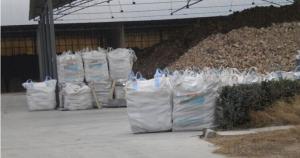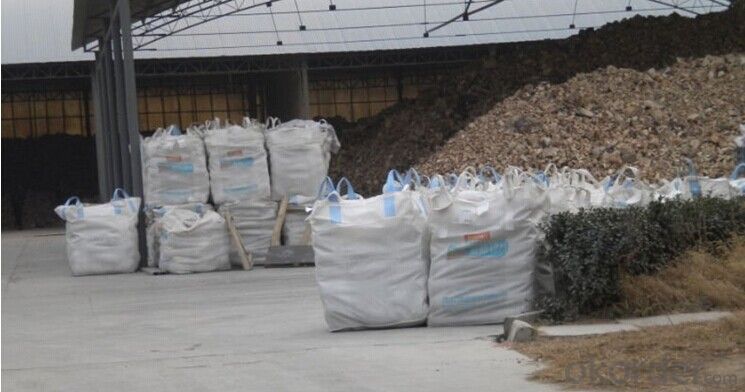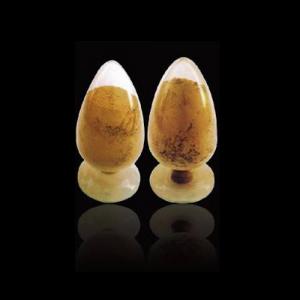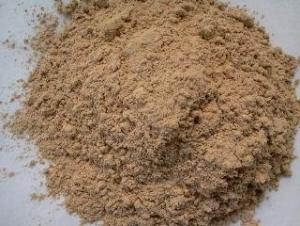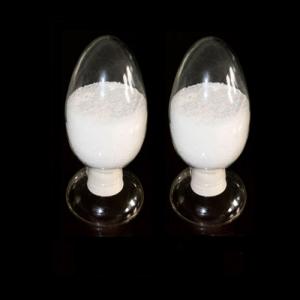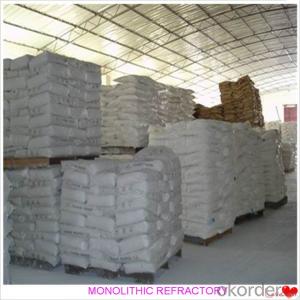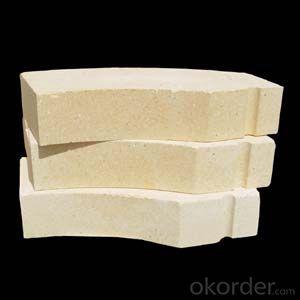Monolithic High Alumina Mortar Refractory for Iron and Steel Industry
- Loading Port:
- Qingdao
- Payment Terms:
- TT OR LC
- Min Order Qty:
- 500 m.t.
- Supply Capability:
- 10000 m.t./month
OKorder Service Pledge
OKorder Financial Service
You Might Also Like
Specifications
high alumina mortar steel plant refractory manufacturers
1. Convenient installation
2. Anti-corrosion
3 ISO Approved
high alumina mortar steel plant refractory manufacturers
convenient installation, anti-corrosion, long service life
excellent disintegration performance, easy separation and purifying function
Refractory Mortar belongs to air hardening refractory mortar, are supplied as ready-to-use wet blends of finely-ground aggregates and special binders.
2. The mortar develop good strength on air drying, forming strong joints and conferring an almost monolithic structure to the brickwork
3. Supply status: Wet state or dry state, generally supplied With the barrel if it’s wet, and the dry mortar can be supplied according to customers’ requirements
Refractory Mortar Features
1. High adhesive strength.
2. Thermal expansion coefficient is low.
3. Heating linear change small.
4. Granularity standard.
5. Construction performance is strong.pP
Typical Application
1. for laying insulting firebricks, super-duty and high alumina dense refractory bricks
2. provide resistance to infiltration of air or hot gases
3. retard penetration of slag and molten metal into the joints
- Q: How are monolithic refractories recycled or disposed of at the end of their lifespan?
- Monolithic refractories at the end of their lifespan are typically recycled or disposed of through various methods. Recycling involves collecting the used refractory materials and processing them to remove any contaminants. The processed refractories can then be used as raw materials in the production of new refractory products. Disposal methods include landfilling in designated areas or utilizing waste-to-energy facilities to convert the refractories into energy. The choice between recycling and disposal depends on factors such as the condition of the refractories and the availability of recycling facilities in the area.
- Q: What are the typical operating temperatures for monolithic refractories?
- The typical operating temperatures for monolithic refractories range from 1,100 to 1,800 degrees Celsius (2,012 to 3,272 degrees Fahrenheit), depending on the specific type and composition of the refractory material.
- Q: How do monolithic refractories enhance the performance of ladles and tundishes?
- Monolithic refractories enhance the performance of ladles and tundishes by providing superior thermal insulation, high resistance to thermal shock, and excellent chemical resistance. This improves their durability, reduces heat loss, and minimizes the risk of refractory failure, resulting in increased operational efficiency and extended service life of ladles and tundishes.
- Q: How do monolithic refractories withstand thermal shock and mechanical stress?
- Monolithic refractories are engineered to withstand high temperatures and harsh working conditions, making them ideal for applications that involve thermal shock and mechanical stress. Firstly, monolithic refractories are designed with a high thermal conductivity, which allows them to quickly absorb and distribute heat. This property helps to minimize thermal gradients within the material, reducing the risk of thermal shock. When exposed to sudden temperature changes, the refractory material expands and contracts uniformly, preventing cracks and fractures from forming. Secondly, these refractories have excellent thermal shock resistance due to their low thermal expansion coefficient. This means that they have a minimal tendency to expand or contract when subjected to temperature fluctuations. As a result, they can withstand rapid changes in temperature without experiencing significant structural damage. Furthermore, monolithic refractories possess high mechanical strength, enabling them to withstand various types of mechanical stress. They are formulated with carefully selected raw materials and additives that enhance their load-bearing capacity and resistance to mechanical forces. This enables them to withstand the weight of the surrounding materials, as well as any external forces or vibrations that may be present in the application environment. Moreover, monolithic refractories have good structural integrity and stability, thanks to their dense and compact microstructure. These materials are typically formed by a combination of fine powders, binders, and additives, which are mixed and shaped to create a solid, cohesive structure. This structure provides resistance against mechanical stress, preventing the refractories from crumbling or disintegrating under pressure. In summary, monolithic refractories withstand thermal shock and mechanical stress through their high thermal conductivity, low thermal expansion coefficient, robust mechanical strength, and structural integrity. These properties make them reliable and durable materials for applications requiring resistance to extreme temperatures and challenging operating conditions.
- Q: How are monolithic refractories installed and repaired in iron and steel applications?
- To ensure optimal performance and longevity in iron and steel applications, specific procedures are employed for the installation and repair of monolithic refractories. The installation process typically involves the following steps: 1. Proper surface preparation is crucial. This entails removing loose material, dirt, and dust to create a smooth and clean substrate that facilitates good adherence of the refractory material. 2. The refractory material, supplied as dry powders or granules, is mixed with water or a specific bonding agent according to the manufacturer's instructions to achieve the desired properties. 3. The mixed refractory material is then applied to the prepared surface using techniques such as troweling, spraying, or casting, depending on the installation requirements and the type of monolithic refractory. 4. Curing is necessary to maximize the strength and durability of the refractory material. The curing process can involve air drying, heat treatment, or a combination of both, in accordance with the specific refractory material's recommendations. When it comes to repairing monolithic refractories in iron and steel applications, the following steps are generally followed: 1. Thorough assessment of the damaged area or component is conducted to determine the extent of the damage and the appropriate repair method. 2. The damaged monolithic refractory material is carefully removed using suitable tools and techniques while ensuring the underlying substrate remains intact. 3. Similar to the installation process, the surface where the repair will take place is cleaned and prepared by removing any loose material, dirt, and dust. 4. The repair material, typically the same or similar to the original monolithic refractory, is mixed and applied to the damaged area. The application method may vary depending on the nature of the repair and the specific requirements of the refractory material. 5. The repaired area is properly cured and inspected to ensure the quality and effectiveness of the repair, following the manufacturer's guidelines for curing and post-repair inspection procedures. In conclusion, the meticulous execution of surface preparation, proper mixing and application of refractory material, and appropriate curing procedures are essential for the installation and repair of monolithic refractories in iron and steel applications. These steps guarantee reliable and durable refractory linings, which are vital for the efficient operation of iron and steel processes.
- Q: How do monolithic refractories improve the efficiency of ladle and tundish preheaters?
- Monolithic refractories improve the efficiency of ladle and tundish preheaters by providing excellent insulation, high thermal conductivity, and resistance to thermal shock. These properties allow for better heat retention, reduced heat loss, and quicker and more uniform heating of the ladle and tundish, ultimately improving the overall efficiency of the preheating process.
- Q: How do monolithic refractories help in enhancing the durability of iron and steel equipment?
- Monolithic refractories play a crucial role in enhancing the durability of iron and steel equipment by providing high resistance to extreme temperatures, chemical attack, and mechanical wear. These refractories are composed of a single, homogeneous material, making them more robust and reliable compared to traditional brick or castable refractories. The high-temperature resistance of monolithic refractories allows them to withstand the extreme heat generated in iron and steel manufacturing processes, such as melting, casting, and forging. They can withstand temperatures exceeding 3000°F (1650°C) without losing their structural integrity, preventing premature failure of the equipment. This thermal resistance helps to maintain the shape and structure of the refractory lining, ensuring the efficient and consistent performance of the equipment. In addition to high heat resistance, monolithic refractories also exhibit excellent chemical resistance. Iron and steel equipment often comes into contact with corrosive substances, such as molten metal, slag, and various chemical compounds. The monolithic refractories' ability to resist chemical attack prevents degradation and erosion of the equipment's lining, extending its lifespan. Furthermore, monolithic refractories provide exceptional mechanical strength and wear resistance. The continuous exposure to abrasive materials, physical impacts, and mechanical stress can cause severe damage to the equipment. However, the dense and compact structure of monolithic refractories makes them highly resistant to mechanical wear, minimizing the risk of erosion and spalling. The flexibility and versatility of monolithic refractories are also advantageous in enhancing the durability of iron and steel equipment. They can be easily molded, shaped, and installed in complex geometries, ensuring a tight and precise fit. This eliminates the formation of gaps or weak points, which could lead to thermal or chemical leakage, reducing the risk of equipment failure. Overall, the use of monolithic refractories in iron and steel equipment significantly enhances its durability by providing exceptional resistance to high temperatures, chemical attack, and mechanical wear. These refractories ensure the longevity and reliability of the equipment, resulting in improved operational efficiency and cost-effectiveness in the iron and steel industry.
- Q: How do monolithic refractories prevent heat loss through radiation?
- Monolithic refractories prevent heat loss through radiation by forming a continuous and seamless layer that acts as a barrier to thermal radiation. This layer reflects and absorbs the radiant heat, preventing it from escaping and thus minimizing heat loss. Additionally, the high thermal conductivity of monolithic refractories allows them to efficiently conduct and distribute heat, further reducing the potential for radiation heat loss.
- Q: What are the factors to consider when selecting monolithic refractories for specific applications?
- When selecting monolithic refractories for specific applications, there are several factors that need to be considered. These factors include the operating temperature, chemical environment, mechanical stress, and the desired performance characteristics of the refractory material. The operating temperature is a crucial factor to consider as different monolithic refractories have different temperature limits. It is important to choose a refractory material that can withstand the specific temperature range of the application without suffering from thermal spalling or degradation. The chemical environment in which the refractory will be exposed is another crucial factor. Different applications may involve exposure to various chemicals, acids, alkalis, or gases. It is essential to select a monolithic refractory that is chemically resistant to the specific environment to ensure prolonged durability and performance. Mechanical stress is also an important consideration when selecting monolithic refractories. Some applications may involve high mechanical stress such as abrasion, impact, or thermal shock. It is crucial to choose a refractory material that can withstand these stresses without cracking or failure. The desired performance characteristics of the refractory material should also be taken into account. This includes factors such as thermal conductivity, thermal expansion, density, and strength. The application requirements will dictate the specific performance characteristics needed, and the refractory material should be chosen accordingly. Other factors to consider include installation method, availability, cost, and maintenance requirements. Some monolithic refractories may require specialized installation techniques, while others may be more readily available and cost-effective. Additionally, the maintenance requirements of the refractory material should be considered to ensure ease of upkeep and longevity. Overall, selecting the right monolithic refractories for specific applications requires careful consideration of factors such as operating temperature, chemical environment, mechanical stress, desired performance characteristics, installation method, availability, cost, and maintenance requirements. By considering these factors, one can choose the most suitable refractory material that will provide optimal performance and durability in the given application.
- Q: How do monolithic refractories resist corrosion and erosion in the iron and steel industry?
- Monolithic refractories resist corrosion and erosion in the iron and steel industry through their unique composition and properties. They are made of a single material structure, which eliminates joints and seams, reducing the likelihood of corrosion. Additionally, these refractories are designed to have high density and low porosity, making them resistant to penetration by corrosive elements. The refractories also have excellent thermal shock resistance and mechanical strength, which helps them withstand the harsh conditions of the iron and steel industry. Overall, the combination of their composition, density, and strength enables monolithic refractories to effectively resist corrosion and erosion in this industry.
Send your message to us
Monolithic High Alumina Mortar Refractory for Iron and Steel Industry
- Loading Port:
- Qingdao
- Payment Terms:
- TT OR LC
- Min Order Qty:
- 500 m.t.
- Supply Capability:
- 10000 m.t./month
OKorder Service Pledge
OKorder Financial Service
Similar products
Hot products
Hot Searches
Related keywords
